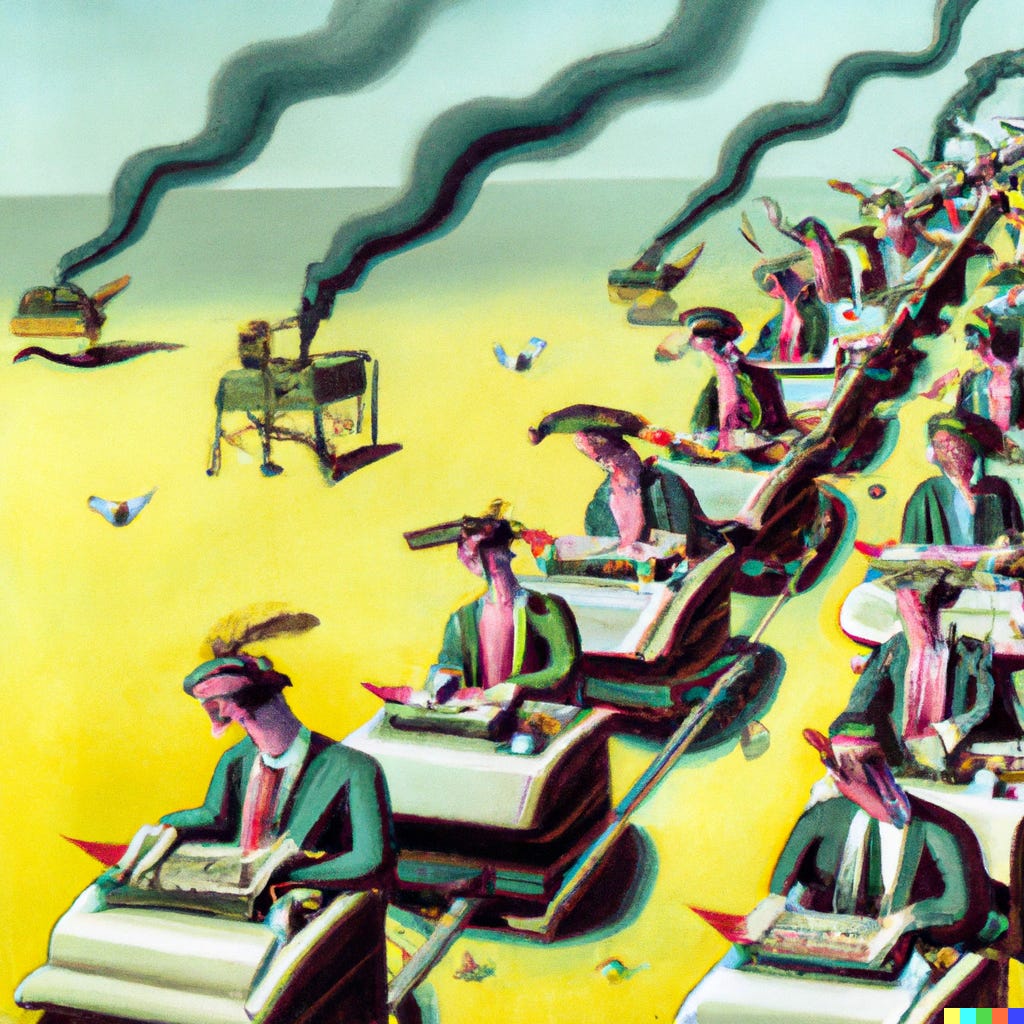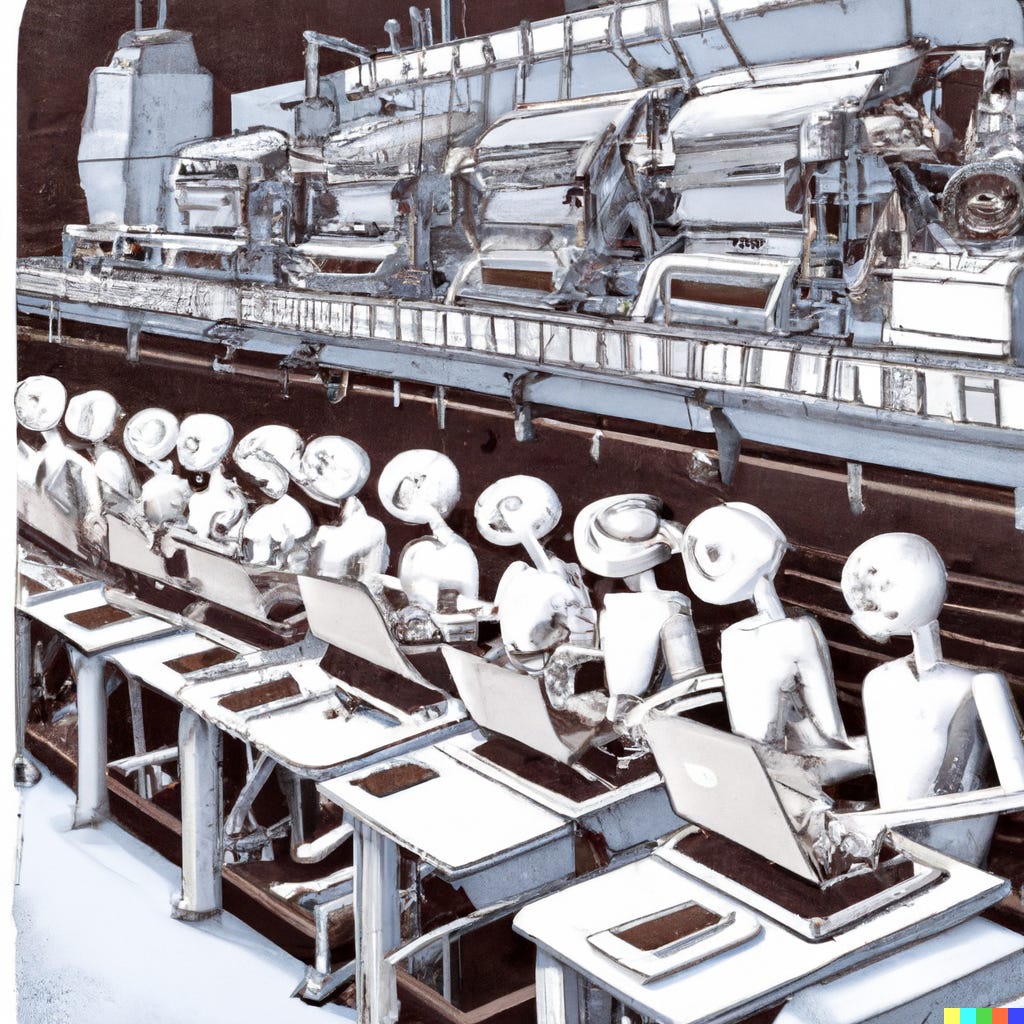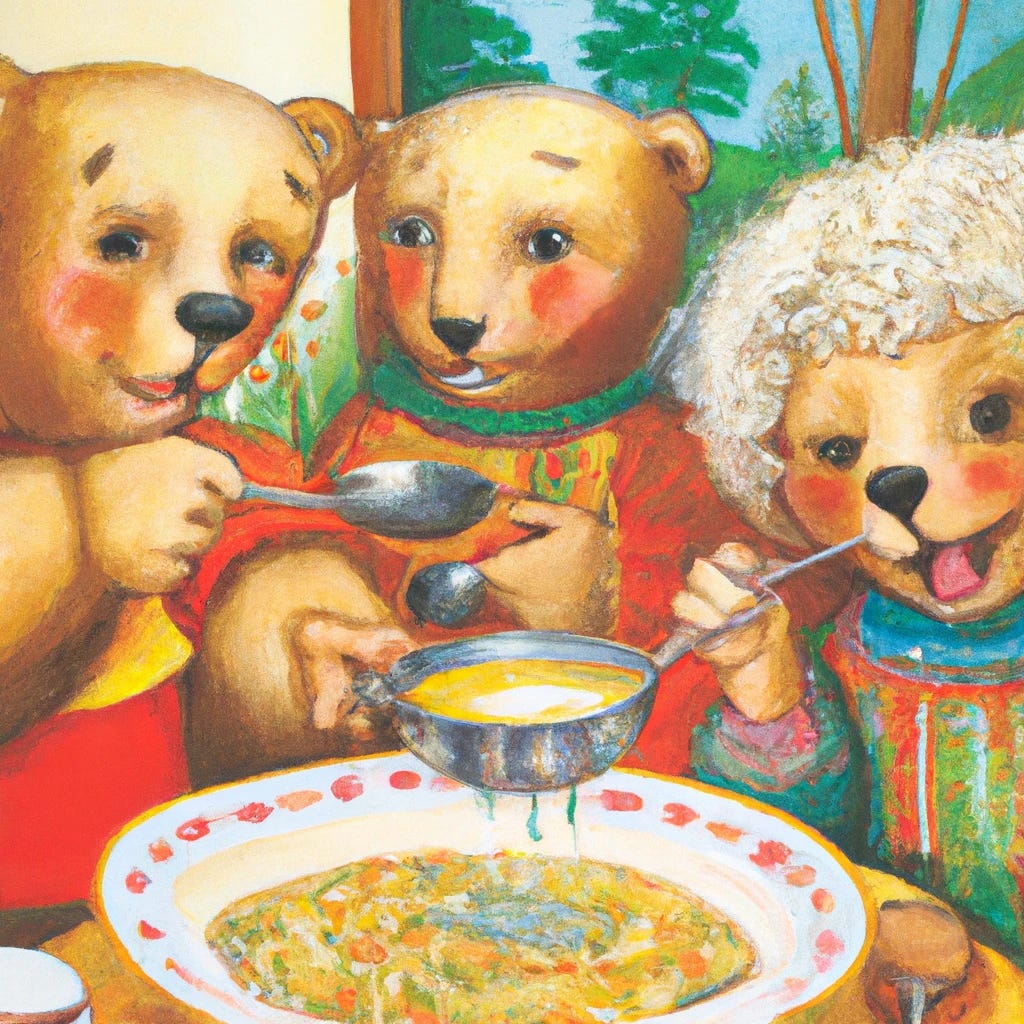Welcome to the Creativity Business, a newsletter about content strategy and the business side of creativity. If you’re not a subscriber, sign up and get content strategy delivered to your inbox every two weeks for free.
The E-Myth: Content Edition
Many years ago, I read a famous entrepreneurship book called “The E-Myth Revisited” by Michael Gerber. This is too broad a generalization, but it teaches readers how to create turnkey systems that build successful franchise-based businesses like McDonald’s. Essentially it argues that if you want a perfectly consistent customer experience at scale, you need to break every single process in your entire business down to a repeatable step-by-step guide. You hire only entry-level workers and train them to do EXACTLY what is in the playbook over and over and over again. If they don’t work out, become miserable, or want more money… who cares? You can get rid of them easily and replace them with another entry-level worker who can obediently follow the step-by-step guide.
It explicitly states that you cannot build a scalable business on extraordinary employees. They are not scalable. And if they leave, you’re up the creek. (Plus, they want too much money.)
While that appears to work wonderfully for cheeseburgers, I can’t imagine a more depressing environment to work in if you applied this concept to creating content. And yet it feels like more content companies and content departments at brands are taking this soulless fast-food factory strategy to heart.
This is a passionate call for creators of all stripes to embrace building Goldilocks Content Zones™, create custom solutions, and shun the search for scalable content.
The Enormous Pressure to Scale
Has there ever been a time when scale matters more? Everywhere you turn, everyone wants more scale.
As industries (like podcasting) grow, there is pressure to develop scalable industry-wide solutions.
As individual companies evolve, there is pressure to develop scalable solutions to get to the next level of growth.
As companies take VC investment or go public, there is enormous pressure to scale revenue and deliver ever-increasing returns.
In the world of tech, the ultimate goal is often to become a unicorn with a scalable product designed specifically to achieve network effects.
We are also currently witnessing the birth of AI-generated creativity, with tools like DALL-E 2 creating astonishing visuals almost instantly from a few keywords (see all images in this edition of the newsletter), and writing tools like Lex speeding up the writing process. One of the many promises of AI content generation is, of course, scale. (Exciting! Infinitely MORE content created with almost no effort… only partially joking.)
And yet, for now anyway, truly original and meaningful content is opposed to the notion of scaling.
Meaningful Content Demands Custom Solutions, Not Scaling
What is the purpose of content? What is the purpose of telling stories?
On the surface, we can say it is to inform or entertain.
On a deeper level, though, content and stories exist to create change and increase understanding.
And if you are seeking to create change and increase understanding by telling stories and creating content, you can’t fire up an industrial content factory cranking out listicle burgers 24/7.
You have to do a LOT of work to create change and have an impact.
You need to know:
Who you’re trying to change
What kind of change you’re trying to create
What successful change looks like
How you’ll measure successful change
Where the people you want to change hang out
How you’re going to reach them in an effective way
What type of context you’re designing content for
What type of media is best suited to create the change you are seeking
How often you will produce the content
Your production budget
Your resources
Your marketing budget
Your owned marketing channels
How you're going to earn their attention
How you’re going to build a relationship with them
How these relationships turn into a desired business result, whether that is ad revenue, website visits, subscriptions, or purchases
Low-price, hyper-efficient content production makes answering these questions impossible. Listicles, tweet-storms, and social memes are ephemeral. They are fluff. They are empty calories. Filler is scalable. You can get AI to write cheap aphorisms all day long and fill Twitter to the gills with it.
However… making someone’s favorite show? That’s not scalable.
Making something that people tell their friends and colleagues about? That’s not scalable.
Making something that changes the recipient - making them smarter, changing the way they think, the way they see the world, the way they see themselves? That’s not scalable.
Audience-First Means, You Need a Goldilocks Content Strategy™
If we go back to the core of “Giv’r Marketing,” you need to put the audience first and create value for the recipient instead of yourself. It’s about giving gifts to the people you want to reach and change.
The audience - the people we are seeking to change - are the ones in control. Just like all of us, your desired audience is getting pickier about where they spend their precious time and attention. You have to earn it by being awesome.
So in the case of scalability and cranking out content burgers, if we return to putting the audience first, we realize that NO ONE is asking for a scaleable firehose of mediocre content. They want something in their personal Goldilocks Content Zone™. Not too much. Not too little. Not too short. Not too long. Not too often. Not too rarely. Not too smart. Not too dumb. They want something that is JUST RIGHT and JUST FOR THEM.
Our job as content strategists is to figure out our desired audience’s Goldilocks Content Zone™. It’s hard work and it’s well worth doing. Your audience will LOVE it.
The Business Model Drives the Need to Scale
If audiences don’t want scale, why are companies trying to create content at scale? It’s because much of the business model for content is broken. Advertising most often pays creators a certain dollar amount per thousand people reached (CPM). And if you have an audience of a certain size and you want to make more revenue, you generally have two options:
Grow your audience significantly
Make more content (read: ad inventory) for your existing audience
(NOTE: You could also raise your prices by making a premium product, but that’s for another edition)
Making more content for your existing audience is the easier of the two problems to solve. And that is why you have so many podcasts in “always-on” mode. That is why there are so many listicles. That is why TikTok and YouTube creators make so many videos.
If you’re working in an ad-supported business model, making more and more content is a VERY hard trap to avoid. If, however, you’re a brand making content and the primary goal is something other than ad revenue (and it always is), you don’t have to play the scalable game.
Instead, you can do the exact opposite and create a huge impact on your desired audience.
The Best Solution for Audiences
If you had the choice, would you prefer a suit or dress off the rack at a chain store, or a bespoke custom creation fitted perfectly to you? (I can’t believe I just used the word “bespoke” in this newsletter)
It’s obvious, right? People value things that are tailored perfectly to their needs, interests, personalities, and communities. If you’re going to make something and you want it to impact the desired recipient, you have to design it with them in mind.
It’s a cliché, but if something is designed for everyone, it’s designed for no one.
And if it’s designed specifically for someone, it can’t be scaled.
If it’s specifically designed for ME, I will LOVE it.
Embrace Process Instead of Formula
For another newsletter I write with my friend Geoff about creativity (The Creativity Guild), we recently interviewed NYT best-selling author, A.J. Jacobs about the power of doing experiments. His newest book is about the power of puzzles. I keep returning to a three-character formula from a Japanese puzzle maker that captures the magic of solving puzzles perfectly.
? → !
The question mark is the problem the puzzle offers. The arrow is the process you go through to try and solve the puzzle. And the exclamation mark is the burst of joy when you find the solution.
I can’t think of a better way to think about content strategy. And I even tried to see if DALL-E 2 could come up with something better. Pretty good, but I like the three characters best.
Back to ? → ! for content…
? The question mark is defining the problem: the change you’re trying to make, the identification of the people you’re seeking to impact, the job you are hiring the content to do, etc.
→ The arrow is the process of figuring out what type of content will deliver the results you are seeking within the constraints.
! And the exclamation point is the exhilaration when you find a solution that is a win for the audience and a win for you and your business.
The arrow - the process - is the most important part. The process creates the gift. The process defines the unique Goldilocks Content Zone™ for your particular audience and desired change. There are no formulas to avoid the process. There are no shortcuts to bypass the process. You HAVE to go through the process every single time if you want to make an impact.
To earn time and attention, change minds and hearts, and foster trust between the recipient and the creator, content has to be custom designed every single time.
And THAT is why great content is not scalable.
This is My Custom Solution for Your Goldilocks Content Zone™
To wrap things up on a supremely meta-level, this way of thinking about content strategy is one of the changes I am seeking to make in this newsletter.
I want to encourage more thoughtful and deliberate process in content strategy. Relentless focus on the audience and their unique needs. A greater embrace of the impossibility of a formula, a factory, or a scalable solution. An increased willingness to lean into the murky black hole of an unknown solution to your problem. The reflection to know in your heart that there are no shortcuts in life or in content. And instead of copying and pasting or praying to the AI robot overlords, finding the courage and discipline to do the hard, energizing work of making content genuinely worth the time of those you seek to reach.
— Steve
(P.S.Despite my regular use of ™ neither Goldilocks Content Zone nor Goldilocks Content Strategy is a registered trademark - I just enjoy pretending that they are.)










I love your thinking, Steve. To put it in a music context, content creators have a choice of being either Maroon 5 or Phish. To be a band that a lot of people like, or a band that a few people absolutely love. From a business standpoint, that means getting a million people to see you in concert once, or getting 10,000 people to see you in concert 100 times. Same revenue. Different business model. My bias is to be more like Phish. It feels like more fun and it might even be more sustainable.